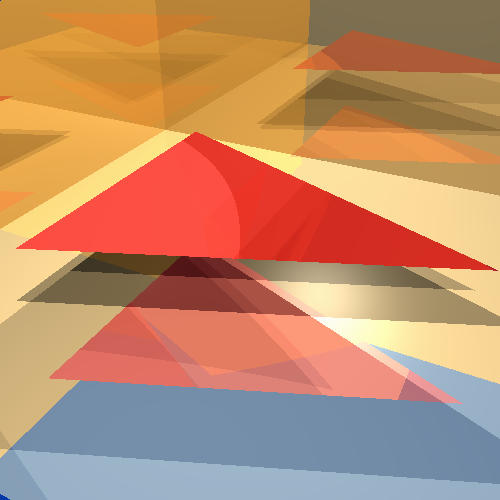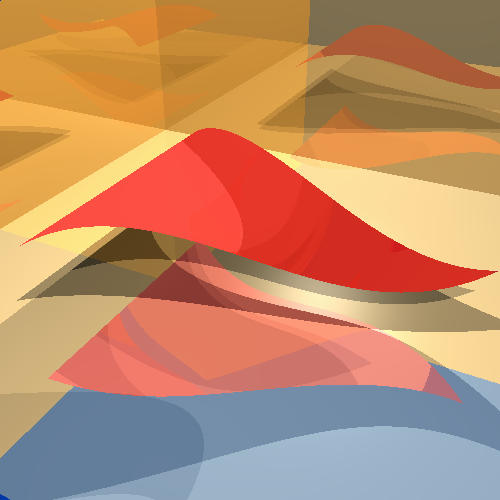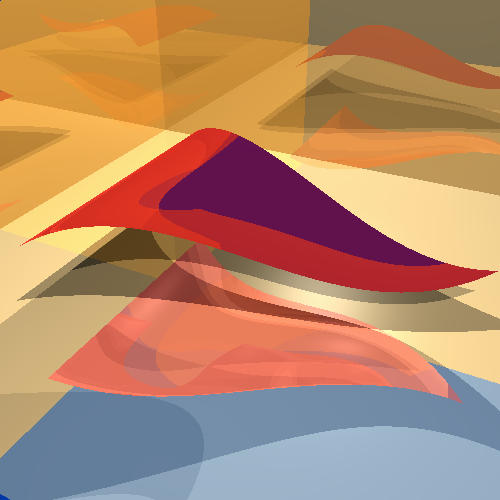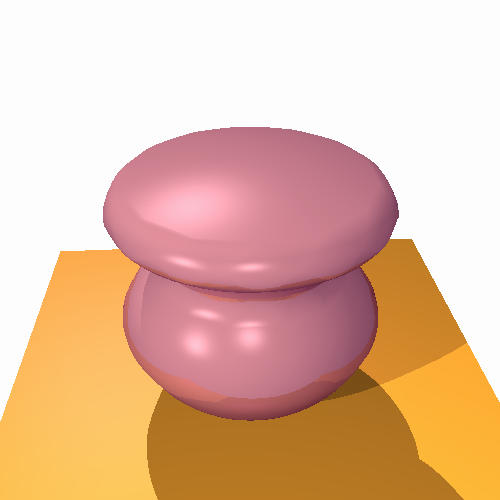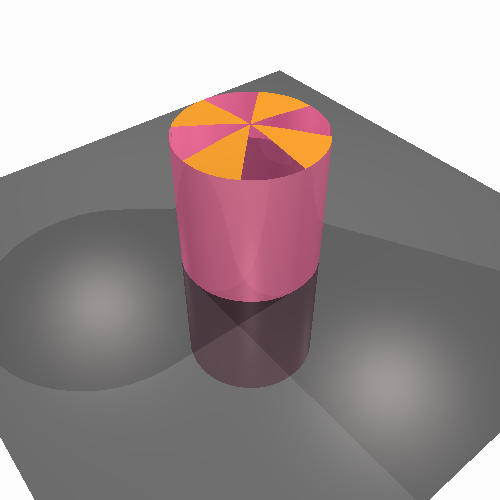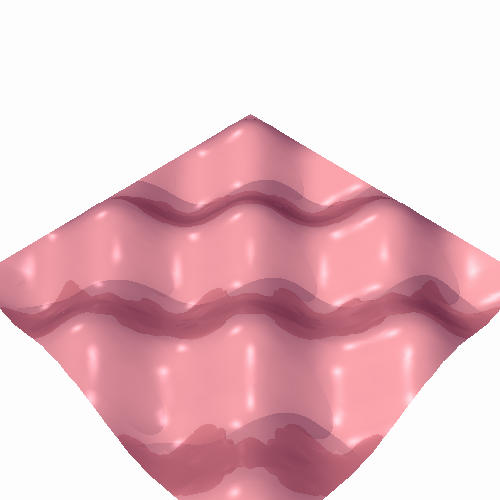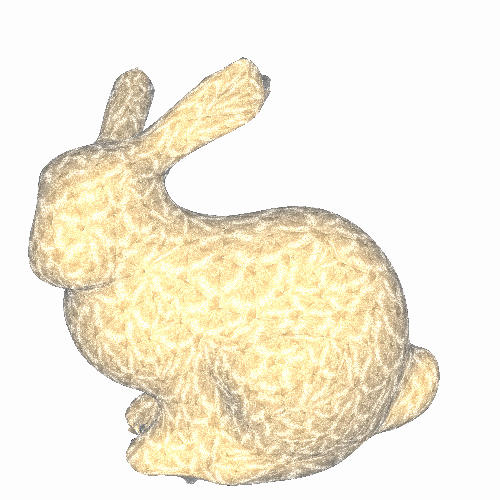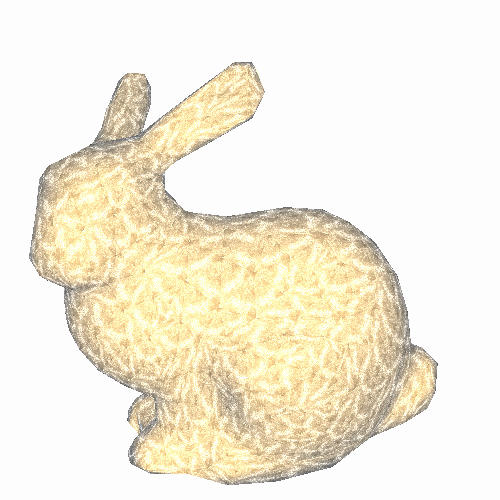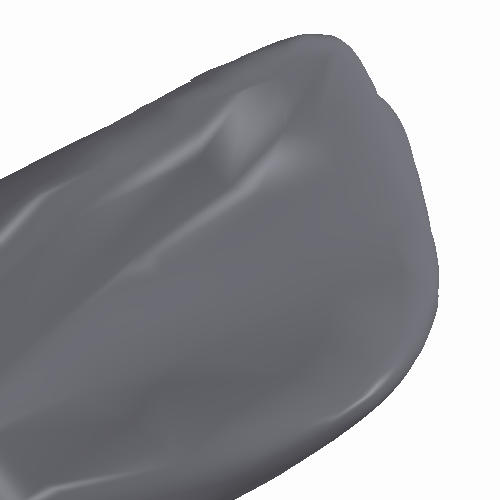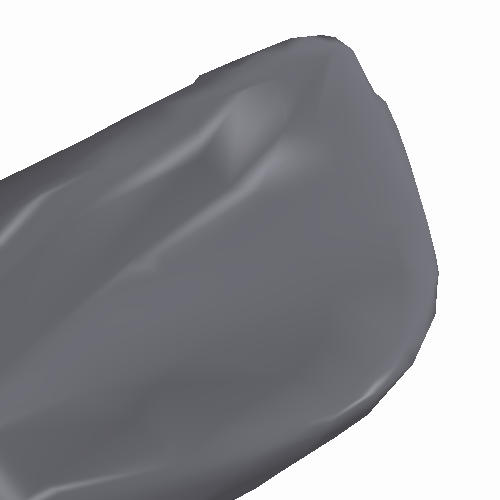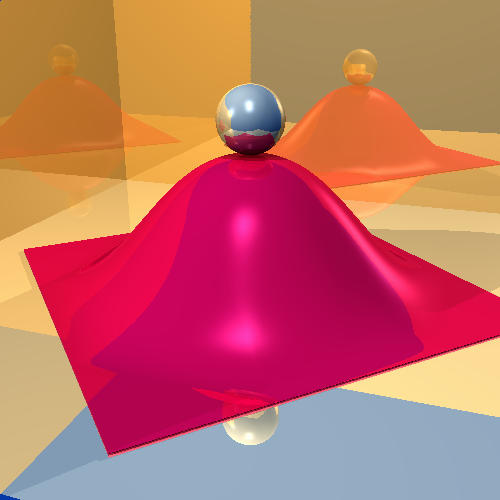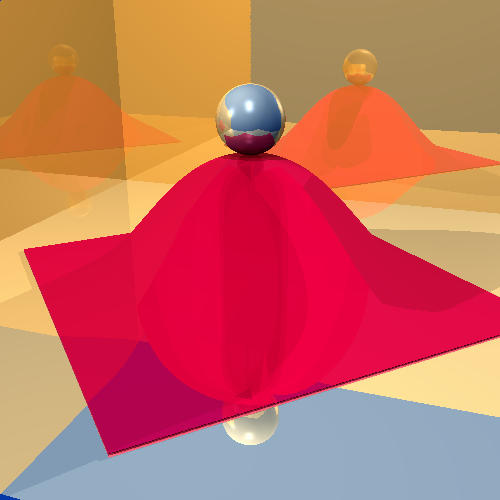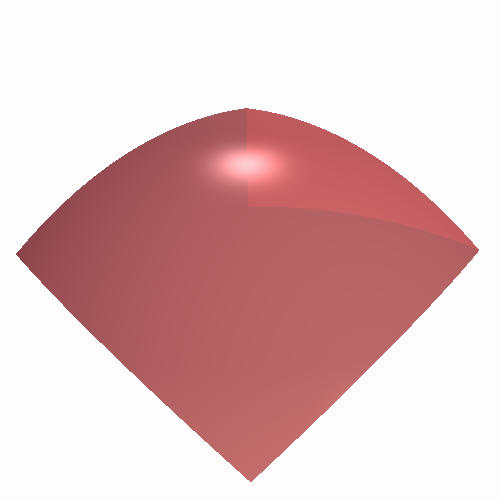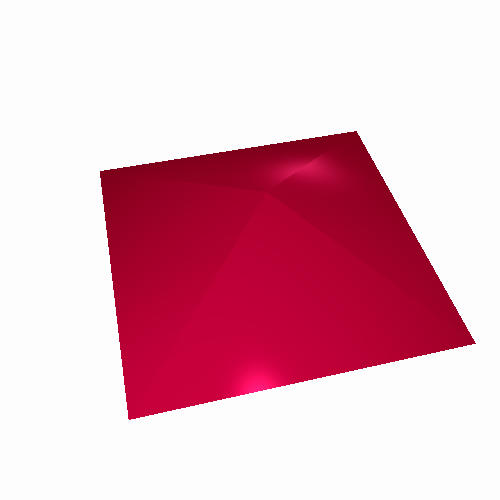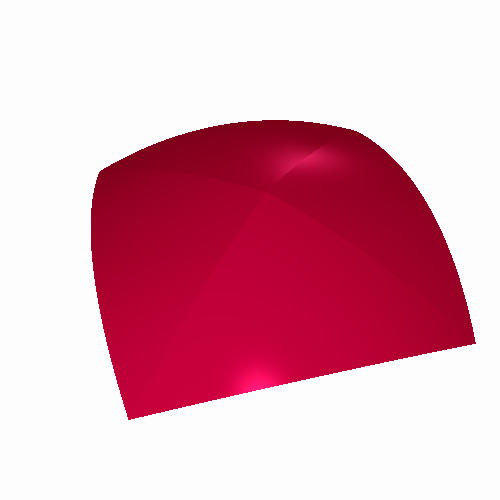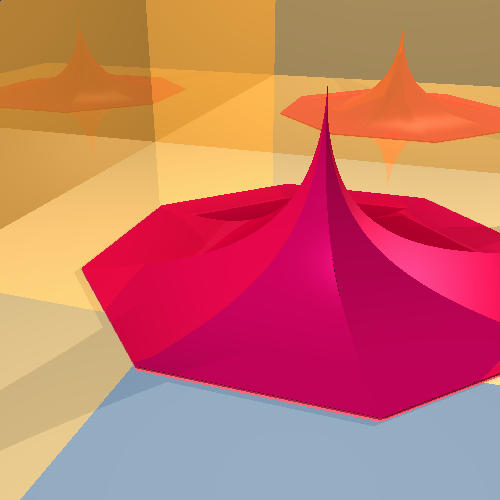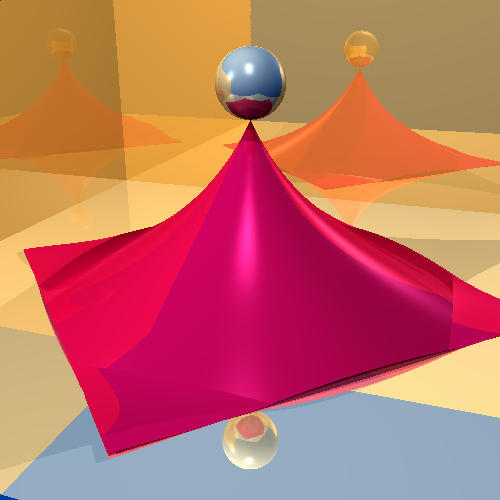RAY TRACING
Ray Tracing is, among others, a fundamental principle to generate synthetic images. The process simulates the interaction of rays, emitted from light sources, with the objects in a scene. Ray Tracing permits photorealism, however, the basic algorithm serves as well in other disciplines, for instance, in applications that simulate the propagation of electromagnetic waves.
Ray Tracing has high computational costs. The determining factors are the number of objects in the scene, their extension, the number of rays to be traced, and the effects to be simulated. A lot of investigation is undertaken around the world to speed-up the ray tracing algorithm. Certain groups report almost interactive ray tracers (with certain limitations).
The principal objective of the research in our group is the introduction of new ideas to accelerate the ray tracing algorithm and to incorporate the algorithm in real applications. Also, ray tracing can be applied in other fields, for instance, as a valuable tool in the process of predicting the strength of the electromagnetic field in wireless telecommunication systems.
-
Curved Surfaces
Ray tracing of curved surfaces which are based on meshes of triangles. The triangles define through the view-dependent intersection algorithm curved surfaces.
-
set of images (stored as .jpg) as contained in the article published in Computer Graphics Forum:
-
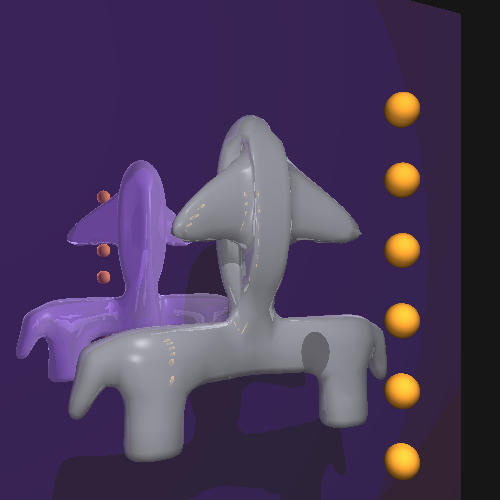 Small animation [2.1MB] which shows an object modeled with 976 patches including reflexions in a mirror and reflexions of other objects on the curved object. The smooth silhouettes are easy to observe.
Small animation [2.1MB] which shows an object modeled with 976 patches including reflexions in a mirror and reflexions of other objects on the curved object. The smooth silhouettes are easy to observe. -
 The same animated object [2.1MB] but modeled with simple triangles. The silhouettes appear as polylines.
The same animated object [2.1MB] but modeled with simple triangles. The silhouettes appear as polylines. -
 Small animation [2.3MB] which shows a cylinder modeled with 16 patches including reflexions on the ground plane and shadows due to several light sources. It can be observed that the patches can be joined either smoothly or defining a sharp edge (tap of the cylinder).
Small animation [2.3MB] which shows a cylinder modeled with 16 patches including reflexions on the ground plane and shadows due to several light sources. It can be observed that the patches can be joined either smoothly or defining a sharp edge (tap of the cylinder).
-
-
Coherent Ray Tracing
-
Softshadow generation
-
 Acceleration technique for distributed (stochastic) ray tracing to include penumbra.
Acceleration technique for distributed (stochastic) ray tracing to include penumbra. -
Application for the simulation of the propagation of electromagnatic waves
-
Space subdivision
Financed Projects
-
Title: RETRAMAS: Motor de render baseado en trazado de raios con mellora de modelado e visualización de maias de triángulos e inclusión de diferentes efectos especiales
Start Date: 31/10/2008
End Date: 31/10/2011
Budget: 72450 €
Leaders: Juan Francisco Gálvez Gálvez
Funding Bodies: Xunta de Galicia [PGIDIT08TIC029E], Firmist Animación S.L.
Publications
-
Title: A view point dependent approach to ray trace free-form surfaces
Year: 2005
Journal: Computer Graphics Forum
Editorial: Wiley-Blackwell Publishing [[10.1111/j.1467-8659.2004.00748.x]]
Issn: 0167-7055
Volumen: 23
Pages: 143 - 155
Impact factor: 1.860
Base: JCR 2013
Area: Computer Science and Software Engineering
Type: Journal Articles
Authors: Arno Formella, Kerstin Müller
People Involved
- Bernández Pazo, Juan José
- Blanco Lamarco, José
- Diéguez Arias, Daniel
- Doval González, José
- Formella, Arno
- Lukaszewski, Andrzej
- Müller, Kerstin
Student Work
-
Title: Reducción del número de rayos de sombra en un trazador de rayos mediante la implementación de caches para las luces
Year: 2010
Editorial: Universidade De Vigo [OUR PFC 2170]
Volumen: INX-1044
Type: Bachelor's Thesis
Authors: José Blanco Lamarco
-
Title: Introducción de trazado de rayos en la cadena de producción de Firmist S.L. con ampliaciones en penumbras y nuevo tipo de luz
Year: 2009
Editorial: Universidade De Vigo [OUR PFC 2008]
Type: Master's Thesis
Authors: Juan José Bernández Pazo
-
Title: Almacenamiento y uso eficiente de historiales de rayos para la técnica Ray Tracing y explotación de la coherencia temporal para acelerar el cálculo de animaciones con un trazador de rayos
Year: 2009
Editorial: Universidade De Vigo [OUR PFC 2009]
Volumen: INX-931
Type: Bachelor's Thesis
Authors: Daniel Diéguez Arias
-
Title: Realización de una mejora del rendimiento de un trazador de de rayos aprovechando de la coherencia entre rayos
Year: 2004
Editorial: Universidade De Vigo [OUR PFC 1053]
Volumen: INX-412
Type: Bachelor's Thesis
Authors: José Doval González
Press Articles
- (17/10/2008)Diseñan un sistema que agilizará la realización de imágenes en 3D para películas de animación
